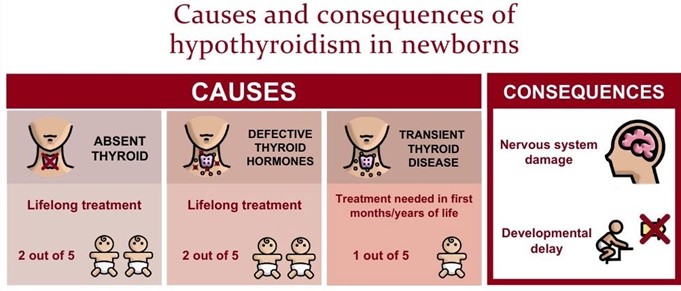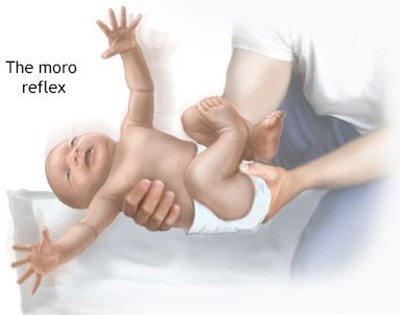A breastfeeding infant, screened for congenital hypothyroidism, is found to have low levels of thyroxine (T4) and high levels of thyroid stimulating hormone (TSH). Which is the best explanation for this finding?
The TSH is high because of the low production of T4 by the thyroid.
The thyroxine level is low because the TSH level is high.
The thyroid gland does not produce normal levels of thyroxine for several weeks after birth.
High thyroxine levels normally occur in breastfeeding infants.
The Correct Answer is A
In a normal infant, T4 levels increase after birth due to stimulation by TSH from the pituitary gland. In this case, the T4 level is low and the TSH level is high, indicating that the thyroid gland is not producing enough T4 in response to TSH stimulation. This suggests that the infant may have congenital hypothyroidism, which requires prompt treatment to prevent developmental delays and other complications.
The low T4 level is not a direct cause of the high TSH level; rather, the high TSH level is a compensatory mechanism to increase T4 production. It is not normal for a breastfeeding infant to have high thyroxine levels. While the thyroid gland may take a few weeks to reach normal function after birth, the persistent low T4 and high TSH levels in this infant suggest a more serious issue.

Nursing Test Bank
Naxlex Comprehensive Predictor Exams
Related Questions
Correct Answer is C
Explanation
The startle reflex, also known as the Moro reflex, is a normal reflex in infants that is present at birth and usually disappears by 3-4 months of age. The reflex is elicited by a sudden loud noise or change in position, and the infant will extend their arms and legs, then bring them back in towards their body.
If a 6-month-old infant is still demonstrating the startle reflex, it may indicate a developmental delay or neurological issue and requires further evaluation by the nurse or healthcare provider.
The other responses are all normal developmental milestones for a 6-month-old infant. By 6 months of age, most infants will have doubled their birth weight, enjoy playing games like peek-a-boo, and have developed the ability to turn their head to locate sounds.

Correct Answer is D
Explanation
If a child's systolic blood pressure is greater than the 90th percentile during a routine clinic visit, the nurse should take the blood pressure two more times during the visit and determine the average of the three readings. This will provide a more accurate assessment of the child's blood pressure. Referring the child to the healthcare provider and scheduling an evaluation of blood pressure in two weeks
A. may be necessary if the child's blood pressure remains elevated, but it is not the next action that should be taken. Measuring the child's blood pressure three times during the visit and determining the highest of the readings
B. is not recommended because it may overestimate the child's blood pressure. Conducting a head-to-toe assessment and omitting repeated blood pressures during the examination
C. is not appropriate because it does not provide an accurate assessment of the child's blood pressure.
Whether you are a student looking to ace your exams or a practicing nurse seeking to enhance your expertise , our nursing education contents will empower you with the confidence and competence to make a difference in the lives of patients and become a respected leader in the healthcare field.
Visit Naxlex, invest in your future and unlock endless possibilities with our unparalleled nursing education contents today
Report Wrong Answer on the Current Question
Do you disagree with the answer? If yes, what is your expected answer? Explain.
Kindly be descriptive with the issue you are facing.
